On View
Discover 5 Artists Breathing New Life Into Photography in MoMA’s Biannual Survey
This year's theme, “Being,” focuses on the politics of representation, identity, and privacy.
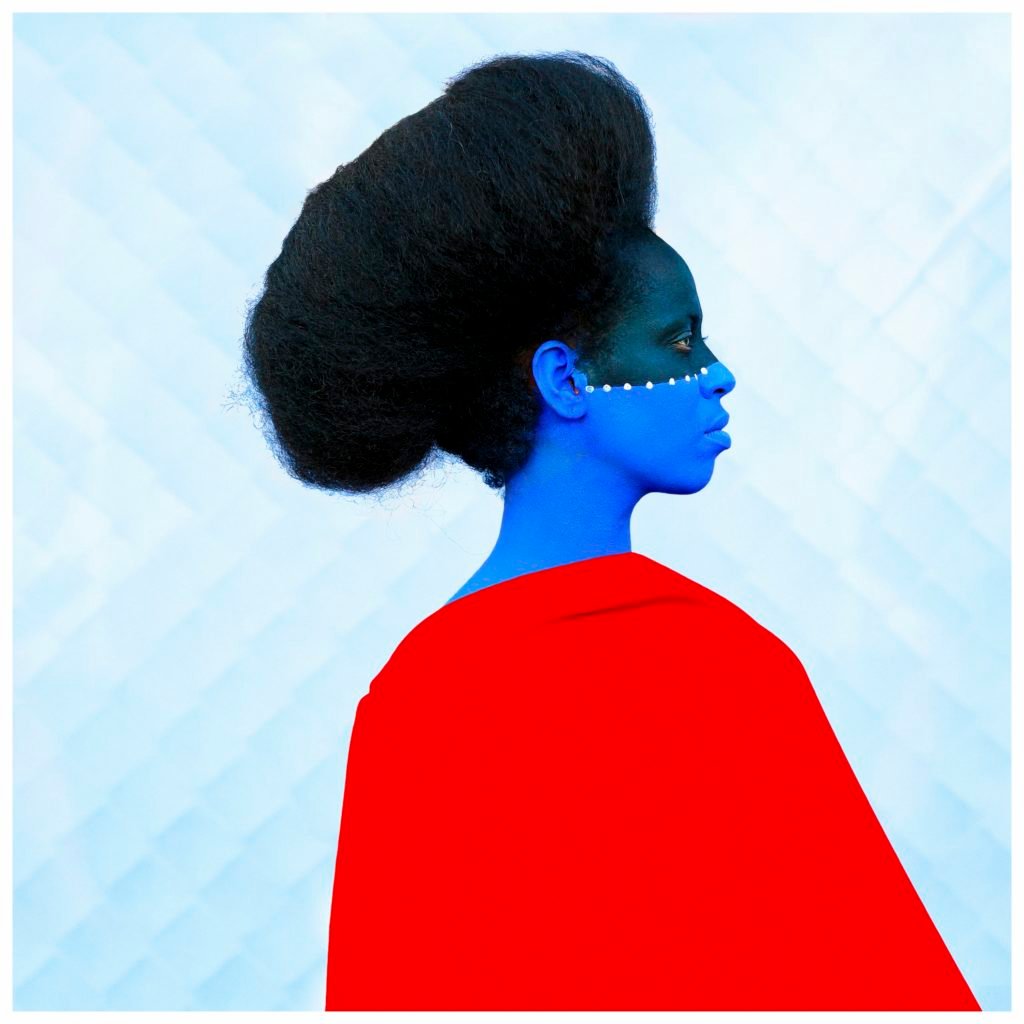
This year's theme, “Being,” focuses on the politics of representation, identity, and privacy.

Taylor Dafoe

The Museum of Modern Art opened the 25th edition of its biannual New Photography survey last week. Organized by Lucy Gallun, an assistant curator in the department of photography, this year’s edition is titled “Being: New Photography,” and includes 17 artists from eight different countries, all under the age of 43.
Whereas the previous New Photography exhibition, “Ocean of Images,” looked at how artists were addressing the shifting landscape of image production and dissemination in the post-internet era, “Being” turns its focus back to what is, in some ways, more familiar territory: the politics of representation, identity, and privacy.
The curatorial conceits of the exhibition harken back to issues that first rose to the forefront of the discourse around the medium in the late 1970s and ‘80s, when thinkers like Martha Rosler began questioning photography’s capacity to exploit, exoticize, objectify, and violate its subjects. These concerns are central to many of these young artists’ works, as are other salient issues such as gender, race, sexuality, and transnationalism.
New Photography was founded in 1985 by John Szarkowski, then the museum’s director of photography, and perhaps the most influential photography curator of the 20th century. Since its inception, the series has shown the work of more than 100 photographers—a group that, for better or worse, is fairly representative of the current landscape of contemporary photo-based art. Unsurprisingly, it’s also predominantly white and male. “Being,” though flawed, introduces a welcomed change to that trend. This year’s crop is not only a more diverse group from top to bottom, it’s also a cross-section of artists united in their efforts to turn their lenses on representation itself.
To get a sense of this year’s New Photography, here’s a look at some of the standout artists.
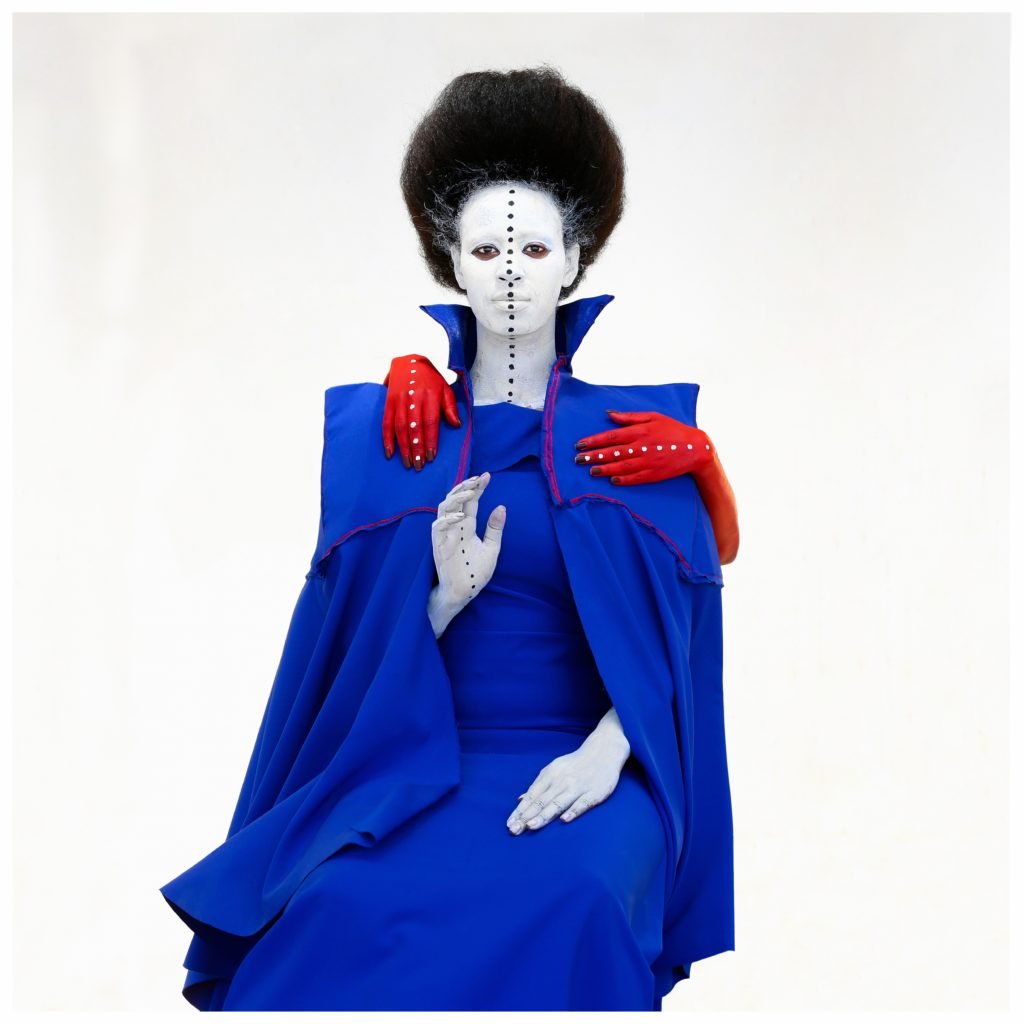
Aïda Muluneh, All in One (2016). Courtesy of the artist and David Krut Projects. © 2018 Aïda Muluneh.
A portrait of a straight-faced black woman wearing white makeup is the first thing viewers see upon entering the exhibition. The subject is dressed in an azul blue robe, while a pair of red hands reaches from behind to rest upon her shoulders. A dotted black line runs down her face. It’s a work by Aïda Muluneh, titled All in One (2016), and it’s an appropriate choice for the show’s introductory statement, symbolizing many of the themes that course throughout “Being”: duality, multinationalism, identity performance, and an exploration of the tropes of portraiture.
Muluneh, who was born in Ethiopia but spent much of her life living in various other places, is interested in exploring the role of heritage in one’s identity. She often channels African body art in her pictures, particularly in her series “The World is 9,” named after a saying by her grandmother: “The world is nine; it is never complete and it’s never perfect.”
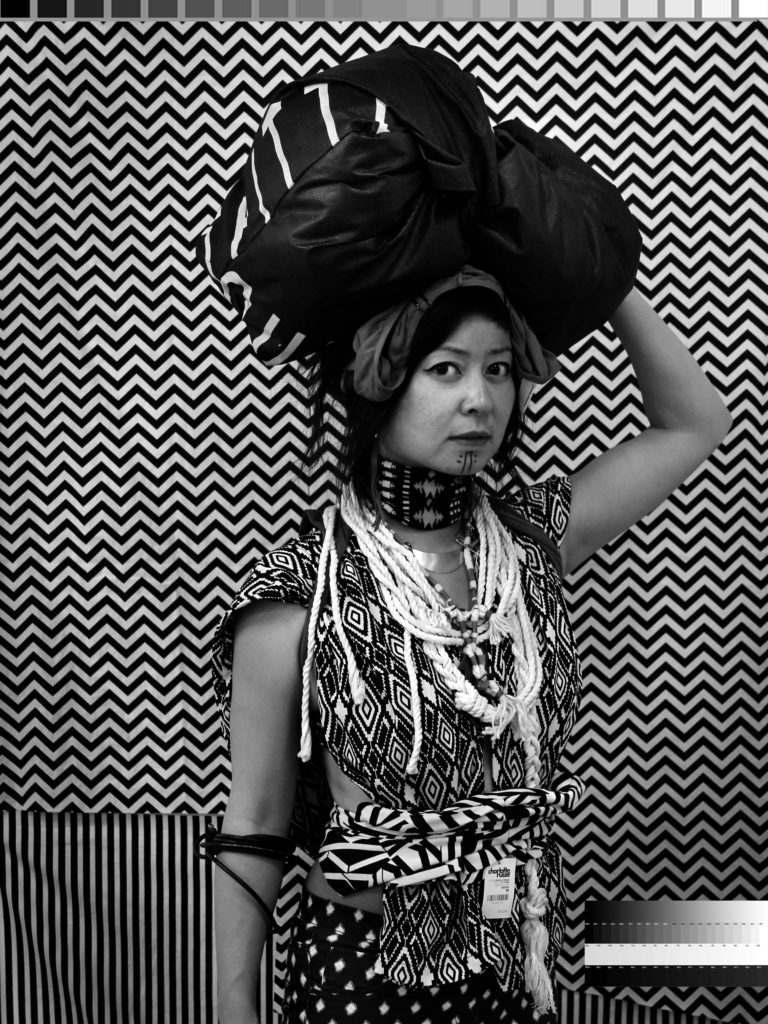
Stephanie Syjuco, Cargo Cults: Head Bundle (2013-16). Courtesy of the artist and Catharine Clark Gallery, San Francisco and Ryan Lee Gallery, New York. © 2018 Stephanie Syjuco.
Similar to Muluneh, the artist Stephanie Syjuco, born in the Philippines and based in the US, presents a series of costumed portraits that call into question how clothes, colors, and other decisions serve as signifiers of ethnicity. In her “Cargo Cults” series of black-and-white photographs, for instance, Syjuco adopts the methods of 19th-century ethnographic portraiture, using mesmerizing dazzle camouflage patterns—a WWI technique of ship design meant to confuse enemies—to mimic indigenous garb. However, the attire donned by her models is not special; they wear clothes purchased from cheap US stores that outsource labor, such as Forever 21, H&M, and Gap. The tags are left on and appear in the shots. After the shoots, Syjuco returned all the clothes for full refunds.
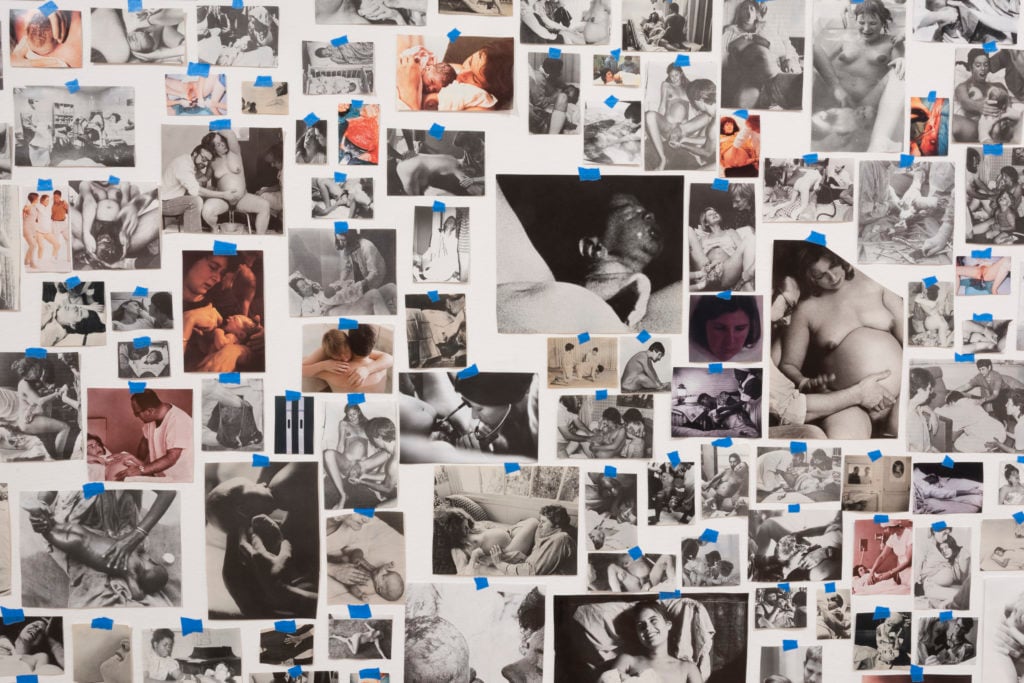
Carmen Winant, detail of My Birth (2018). Courtesy of the Museum of Modern Art, New York. Photo by Kurt Heumiller. © 2018 Carmen Winant.
Carmen Winant contributes one striking work to the exhibition: a site-specific installation of thousands of found images of women before, during, and immediately after childbirth. The piece, titled My Birth (2017-18), takes up two gallery hall walls from floor to ceiling, and is impossible to take it in entirely from one vantage point. Her images are sourced from old books and magazines and hung with torn strips of blue painters tape. They are both hard to look at it and hard not to. Mothers are shown in a variety of states—sweaty, bloody, agonized, exhausted, delirious, or simply asleep. By many standards, the work is graphic. But the subjects are also completely natural, drawing attention to the artificial moral constraints we put on photographic communication.
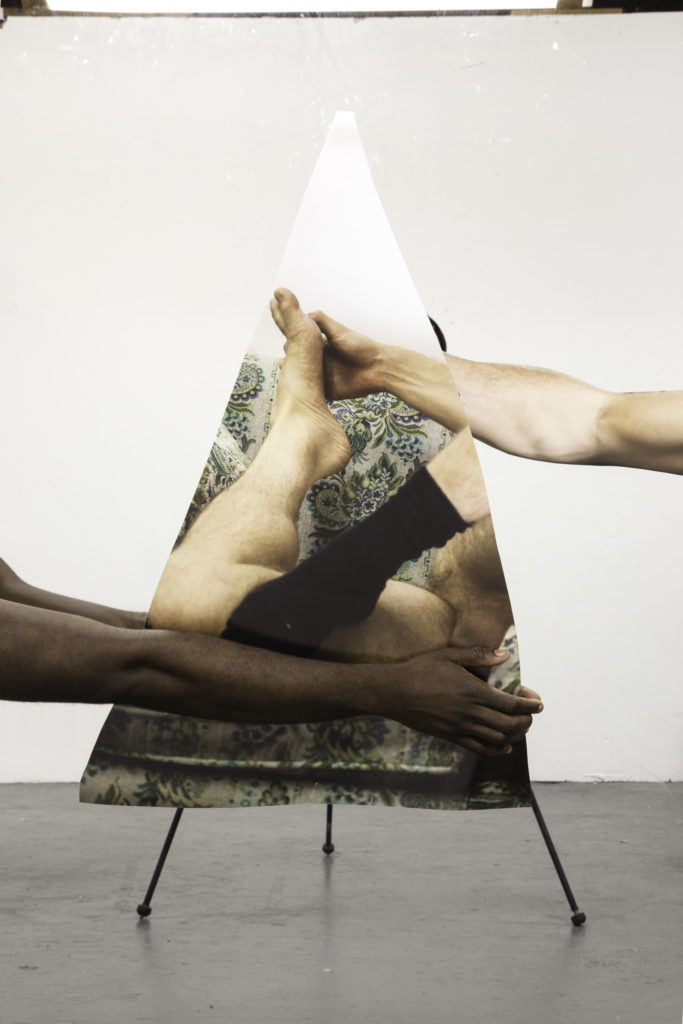
Paul Mpagi Sepuya, Mirror Study (4R2A0857) (2016). Courtesy of the Museum of Modern Art, New York. © 2018 Paul Mpagi Sepuya.
At first glance, Paul Mpagi Sepuya’s fragmented photographs look like digital collages, but up close it’s clear that they are in fact single-frame shots. In his “Figures, Grounds, and Studies” series, Sepuya directs his lens toward a large mirror so that the camera, tripod, and bits of the artist’s arms are often in the shot. Then he introduces objects—photographic prints, a black cloth—in the physical space between the camera and mirror. What’s captured in the image is a dense, disjointed combination of objects where the foreground, background, and intermediate space of the picture are indistinguishable from one another.
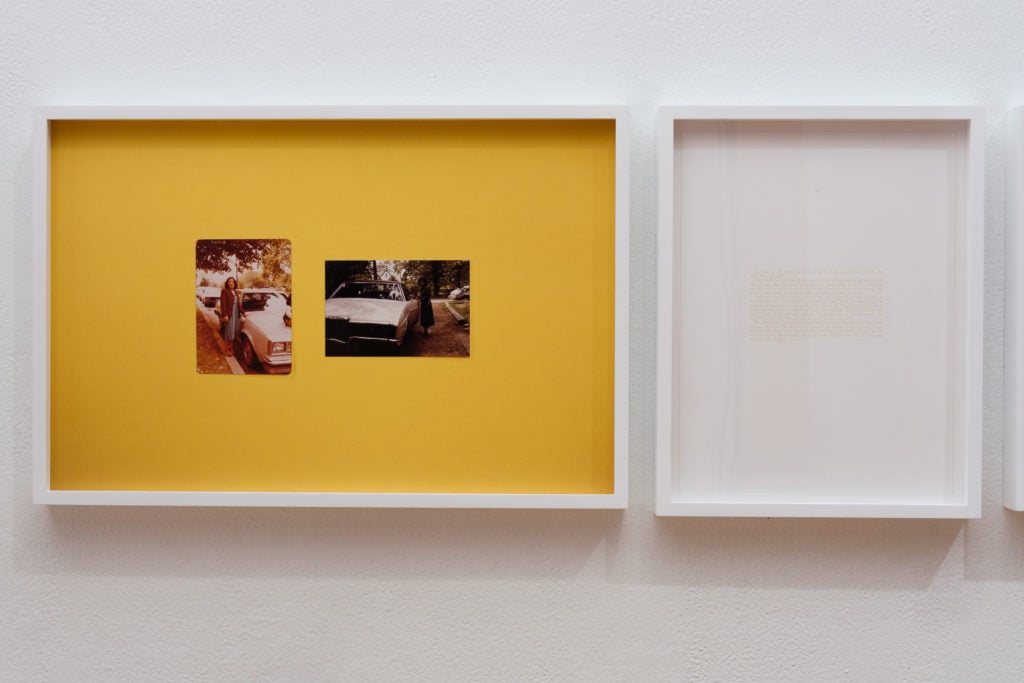
Hương Ngô and Hồng-Ân Trương, detail of The opposite of looking is not invisibility. The opposite of yellow is not gold (2016). Courtesy of the artists. Photo by Jerry Mann © 2018 Huong Ngo and Hong-An Truong.
For their collaborative project The opposite of looking is not invisibility. The opposite of yellow is not gold, artists Hương Ngô and Hồng-Ân Trương collected and re-photographed vernacular pictures of their mothers in the 1970s, both of whom immigrated to the US from Vietnam. Though the two immigrants relocated at different times and didn’t know each other, the pictures of their experiences are remarkably similar: standing proudly with their nuclear families or next to shiny American cars. In succession, the images evolve into something more than a portrait of two women; they become a snapshot of gender roles, American ideologies, and the immigrant experience. Juxtaposed with the photographs are framed excerpts from transcripts of US congressional hearings on the place of Vietnamese refugees in American culture, referring to them as aliens and weighing their value based on labor contributions.